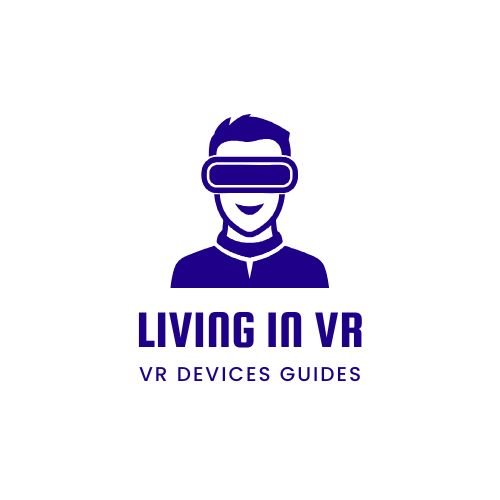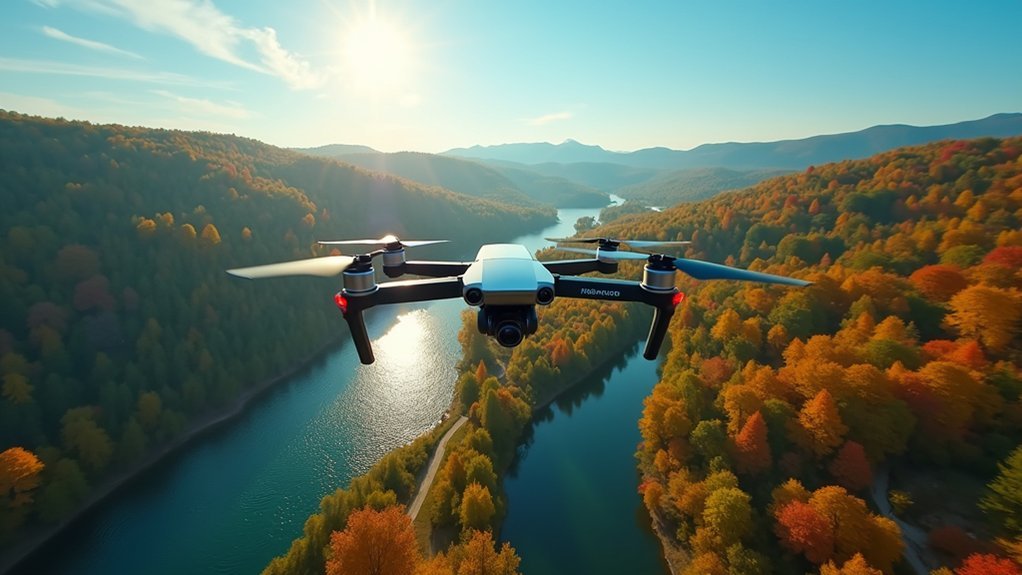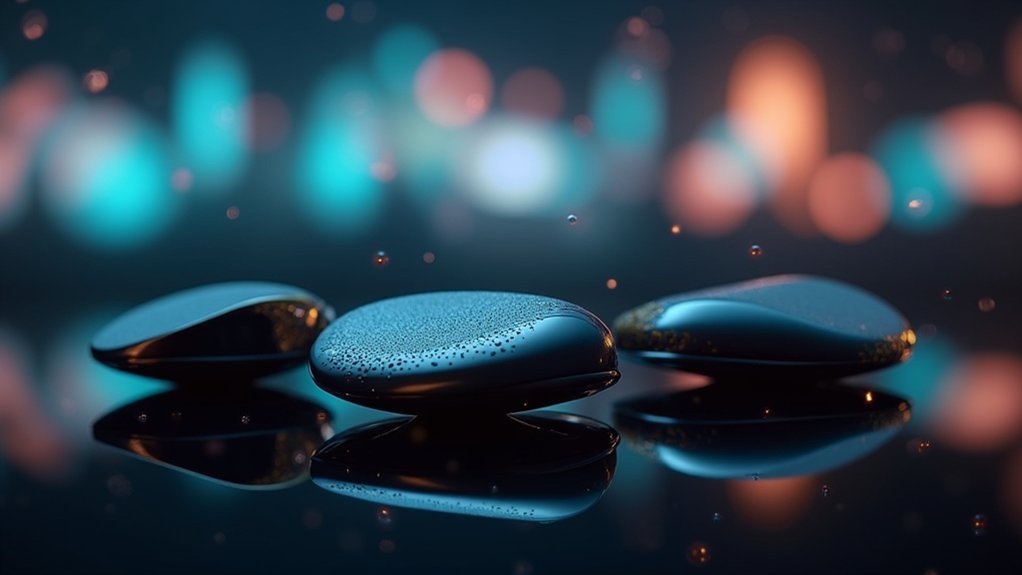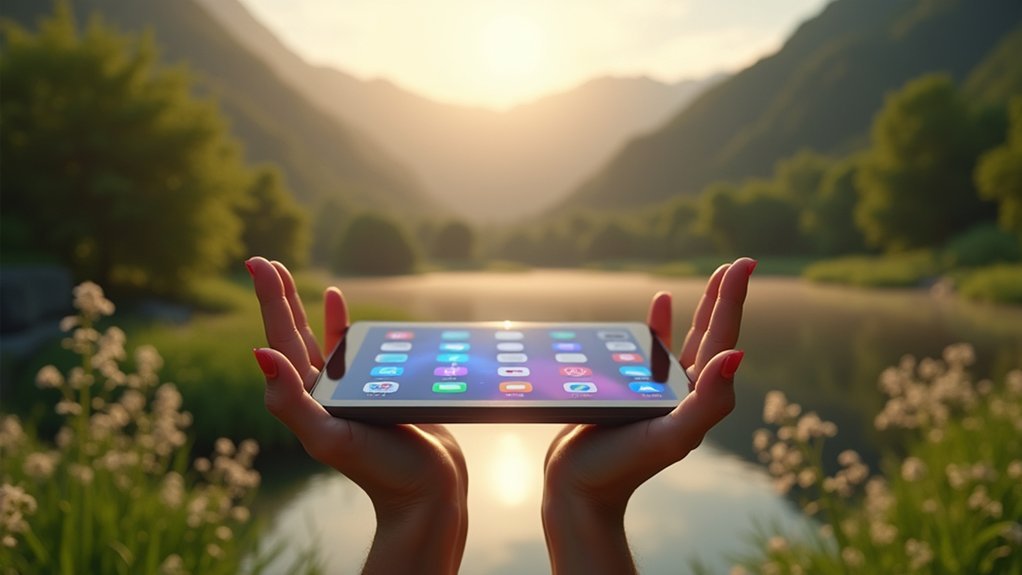You’ll master aerial 360 video by focusing on three essential solutions: First, pair premium cameras like the Insta360 Titan with robust drones such as the DJI Matrice 600, using secure gimbals positioned at least 10 inches from the drone for stability. Second, maintain 100-200 feet altitude in manual mode with 40-50% shot overlap during slow, controlled flights. Third, edit with professional software like Adobe Premiere Pro, exporting in 2:1 panoramic format for VR compatibility. These fundamentals reveal advanced techniques that’ll elevate your productions considerably.
Equipment Selection and Mounting Configurations for 360 Aerial Capture

Selecting the right 360 camera forms the foundation of successful aerial capture, with options like the Insta360 Titan delivering the high dynamic range and resolution you’ll need for stunning footage.
Premium 360 cameras like the Insta360 Titan provide the essential foundation for capturing breathtaking aerial footage with superior dynamic range.
When planning mounting configurations, you’ll want secure attachments and gimbals like the Moza 360 to guarantee video stability during flight. Test different pole lengths to minimize drone visibility in your shots, creating a more immersive viewing experience for viewers.
Don’t forget payload calculations when choosing your drone – larger cameras require robust platforms like the DJI Matrice 600 for safe operation.
Consider integrated lens systems such as the Gear 360 to simplify setup and reduce stitching complications. These cameras offer streamlined solutions compared to multi-camera rigs, making your aerial footage production more efficient and reliable.
Flight Techniques and Camera Settings for Professional Results
Once you’ve secured your equipment setup, mastering specific flight patterns and camera configurations will elevate your 360 aerial footage from amateur to professional quality.
Set your camera to manual mode and maintain 100-200 feet altitude for ideal results. Execute straight vertical flights at consistent speeds for seamless shifts during post-production editing. Ascertain 40-50% overlap between shots to enable effective stitching later.
Your gimbal provides essential stability and vibration reduction—test camera positioning at least 10 inches from the drone to prevent obstructions.
For thorough 360 views, perform slow, controlled ascents and descents while capturing footage. These deliberate flight techniques, combined with proper camera settings, guarantee high-quality footage that’ll stand out professionally in your final productions.
Post-Production Workflow and Distribution Optimization

After capturing your aerial footage, transforming raw 360 video into a polished, shareable masterpiece requires strategic post-production decisions and distribution planning.
You’ll need professional editing software like Adobe Premiere Pro or DaVinci Resolve to leverage advanced features including keyframing, speed ramping, and color correction.
During post-production, implement motion blur to enhance dynamic movement and create cinematic appeal. Export your videos in stabilized 2:1 panoramic format for ideal compatibility across VR platforms and immersive experiences.
Remember to backup footage regularly throughout your workflow to prevent data loss.
For distribution, platforms like Kuula.co enable you to upload interactive panoramas with seamless website integration and mobile compatibility, maximizing audience engagement and accessibility across multiple viewing platforms.
Frequently Asked Questions
How Can I Make My Drone Footage Look Better?
You’ll dramatically improve your drone footage by using high-resolution cameras, adding gimbal stabilization, maintaining consistent flight speeds, and enhancing post-production with keyframing, motion blur effects, and professional editing software.
What Are the Best Settings for Drone Video?
You’ll want to shoot in 5.7K at 24fps for crisp detail. Use manual exposure settings to control lighting consistency. Maintain steady flight speeds and heights to minimize motion artifacts in your footage.
How to Get Dramatic Stots With a Drone?
You’ll create dramatic drone shots by flying straight up or down at consistent speeds, using speed ramping techniques, and choosing contrasting locations. Mount your camera securely and experiment with dynamic keyframing during post-production.
How to Take a 360 Photo With a Drone?
You’ll fly your drone 100-200 feet high, then use DronePan or manually capture overlapping photos by rotating 45 degrees each shot. Guarantee 40-50% overlap, edit in Camera Raw, and stitch into a spherical panorama.





Leave a Reply